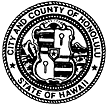
Facility will help
ease water needsThe desalination plant is set
to open within the next two years
As Oahu residents worry about having enough water to keep their lawns green under recent voluntary restrictions, relief could be closer than most think with construction of a desalination plant in Leeward Oahu.
The plant, set to open within the next two years, could reduce water shortages on the island by meeting up to a fourth of the current water demand.
"We're surrounded by sea water," said Barry Usagawa, the Honolulu Board of Water Supply's water resources principal executive. "I don't see why we don't start taking advantage of it."
And that's what the agency, state, and City and County of Honolulu intend to do within the next two years with the plant that will pump up to 35 million gallons of fresh water a day to area homes and businesses.
Islandwide usage now ranges from 150 million to 180 million gallons a day.
The board asked Oahu residents on Aug. 2 to confine irrigation and landscape watering to three days a week under voluntary restrictions.
Water tables on Maui and the Big Island also continue to be low.
The $45 million Kalaeloa Desalination Facility is expected to serve the residents of Leeward Oahu, whose population has grown substantially over the last few decades.
A small pilot facility was just completed at the site to test filters and the plant's control systems, he said.
The plant is being built on 20 acres that previously belonged to the Barbers Point Naval Air Station, and will reach its full capacity in 2020.
Proponents of the plant say it could dramatically better the island's long-term water outlook and prompt similar plants on other islands, especially Maui, where water officials have threatened mandatory restrictions if water consumption in the Upcountry area does not drop.
"It is a water supply that is drought-proof, and it allows us to sustain our natural resources," Usagawa said.
But some environmentalists are concerned about the economic and environmental drawbacks of such an energy-intensive facility.
Desalination plants consume more energy than standard water treatment plants because of the extended water purification process.
Jeff Mikulina, director of the Sierra Club's Hawaii chapter, said that is why such plants are common in countries like Egypt and Kuwait, where oil is plentiful but water is not.
"I think they're looking in the wrong direction," he said. "The first place to look is conservation."
He said the board should concentrate on large water users and on reducing runoff by planting trees and building fences to keep out feral animals that trample underbrush.
"No one solution is going to do it all," Usagawa acknowledged. But, he said, "Our strategic approach is going to do it all."
He said the board also will concentrate on recycling water and promoting healthy-watershed projects.
Board officials have said Oahu is expected to reach its water capacity by the year 2020, pumping nearly 98 percent of its available water supply.
The Ewa plant is the first of its size in the state and one of only a few in the nation that are capable of serving large communities.
A recently opened desalination plant in Tampa Bay, Fla., provides 53 million gallons of water a day to area residents. By 2008 the plant will produce up to 111 million gallons a day and will be the largest such plant in North America.
